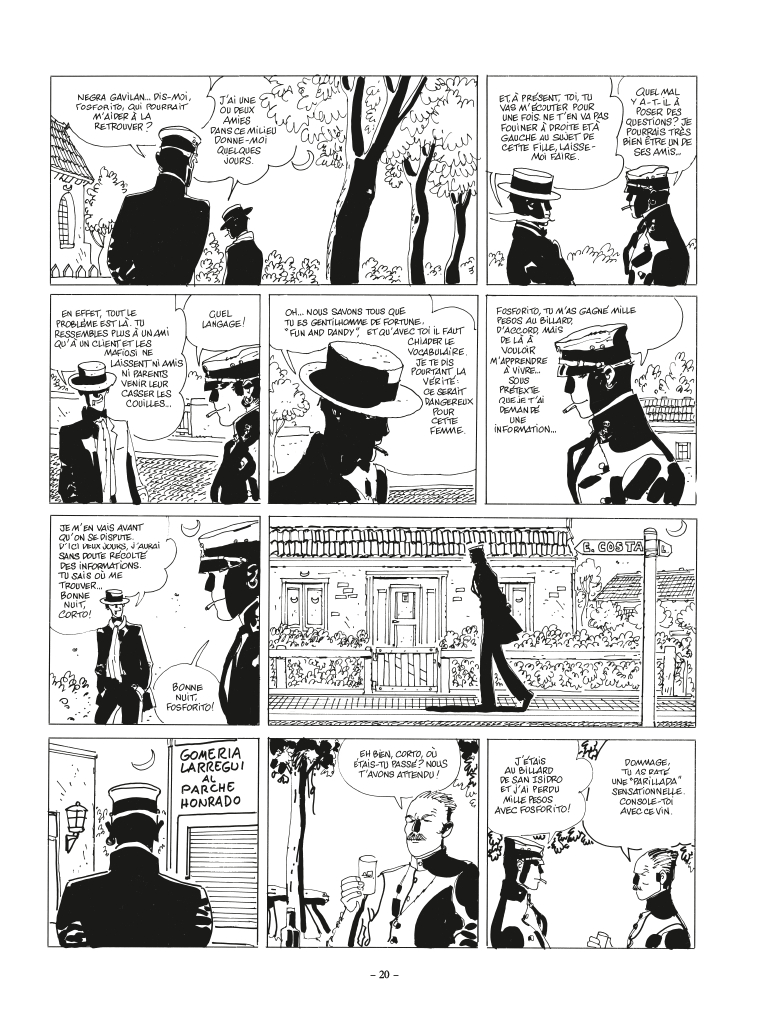


Cassidy fled to Argentina after a life spent in shoot-outs and train robberies in the American West. In this story Corto meets Butch Cassidy, here in the employ of señor Habban, but actually famous at the time for being the head of the legendary “Wild Bunch”. Unbeknown to Corto the girl is actually señor Habban’s young grand-daughter, the beautiful Paso Viola Farias, who saves him by managing to convince her grandfather to let Corto Maltese and the child go without harming them. In the end Corto Maltese manages to trace Louise’s daughter and bring her to safety but not without running considerable risks. Tango is a far more personal story than most Corto Maltese graphic novels, being Hugo Pratt’s love letter to the city he called home and the culture he absorbed when he lived and worked in Argentina on and off for twenty years from 1949. Pratt chooses the unyielding figure of señor Habban to represent this aspect of capitalism the man is both extremely powerful but shady and can maneuver the police (inspector Estevez) and institutions at his will. The central theme of the story, around which all the figures move is, however, that of the great Argentine landowners who possess huge flocks of sheep and control the nation’s entire wool industry. In truth, Corto’s decision to go to Argentina is fuelled by his desire to avenge Louise’s death (rather than search for her) and an attempt to track down and rescue her three year old daughter. In 1923 in San Isidro, a suburb near Buenos Aires, Corto Maltese is investigating the disappearance of Louise Brookszowic implicated in “Warsavia”, a Polish organization that traffics prostitutes, whose objectives are explained by Corto’s friends, Fosforito.


 0 kommentar(er)
0 kommentar(er)
